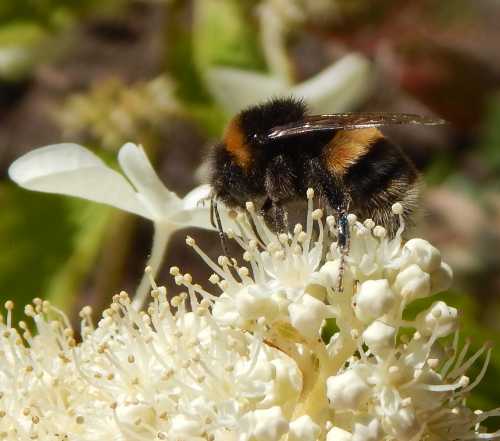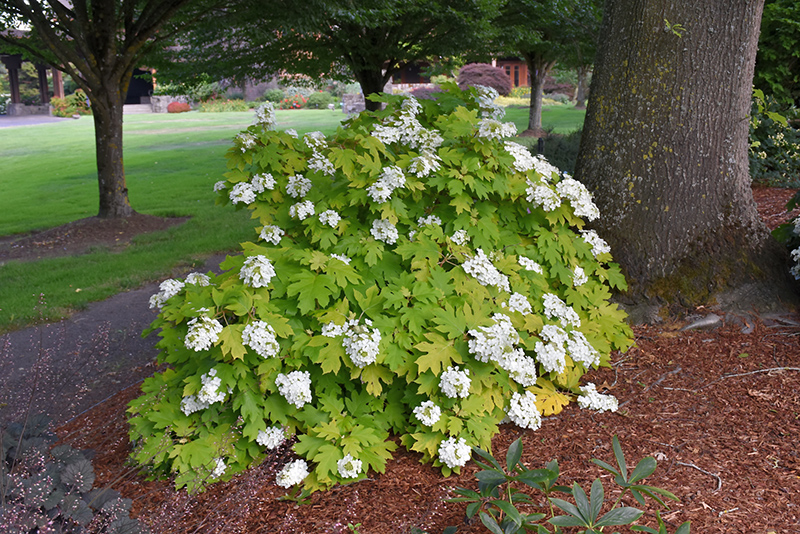Little Honey Hydrangea: The Sweetest Shrub In Your Garden
Little Honey Hydrangea: The Sweetest Shrub in Your Garden
Hydrangeas are a popular choice for gardeners because of their beautiful flowers and easy care. But if you're looking for a hydrangea that's a little bit different, then you should consider Little Honey Hydrangea.
Little Honey Hydrangea is a dwarf variety of oakleaf hydrangea, meaning it only grows to be about 3-4 feet tall. This makes it a great choice for smaller gardens or containers.
The flowers of Little Honey Hydrangea are a beautiful shade of pink that fades to cream as they age. They bloom in late summer and early fall, and they attract butterflies and hummingbirds.
In addition to its beautiful flowers, Little Honey Hydrangea is also a low-maintenance plant. It is drought-tolerant and relatively pest-free.
If you're looking for a sweet and charming addition to your garden, then Little Honey Hydrangea is the perfect choice.
Main Content
- Introduction
Little Honey Hydrangea is a dwarf variety of oakleaf hydrangea that is known for its beautiful pink flowers and easy care. It is a great choice for smaller gardens or containers, and it is relatively pest-free.
- Planting and Care
Little Honey Hydrangeas are easy to plant and care for. They prefer full sun to partial shade, and they need moist, well-drained soil. They are drought-tolerant, but they will bloom better if they are watered regularly.
Little Honey Hydrangeas do not need to be pruned heavily. A light pruning in the spring will help to keep the plant compact and encourage new growth.
- Pests and Diseases
Little Honey Hydrangeas are relatively pest-free. However, they can be susceptible to aphids, scale, and powdery mildew. If you see any pests or diseases on your plant, treat them promptly with an insecticidal soap or fungicide.
- Propagation
Little Honey Hydrangeas can be propagated by division or by cuttings. Division is the easiest method, and it can be done in the spring or fall. To divide a Little Honey Hydrangea, simply dig up the plant and carefully separate it into two or more sections. Each section should have at least a few roots and some leaves.
Cuttings can also be used to propagate Little Honey Hydrangeas. To take a cutting, simply cut a 4-6 inch section of stem from a healthy plant. Remove the leaves from the bottom half of the cutting, and then dip the cut end in rooting hormone. Plant the cutting in a pot of moist potting mix, and keep it in a warm, shady location. The cutting should root in about 4-6 weeks.
- Conclusion
Little Honey Hydrangea is a beautiful and easy-care shrub that is perfect for small gardens or containers. It is a great choice for gardeners who are looking for a low-maintenance plant that will add a touch of sweetness to their landscape.
If you're looking for a beautiful and low-maintenance hydrangea, the little honey hydrangea is a great option. These compact shrubs produce clusters of small, sweetly scented flowers that range in color from white to pink to blue. Little honey hydrangeas are hardy in zones 4-9 and prefer full sun to partial shade. They're also relatively drought-tolerant, making them a good choice for hot, dry climates.
To learn more about little honey hydrangeas, I recommend visiting . This website has a wealth of information about the plant, including its care requirements, planting tips, and pest and disease prevention. You can also find photos of little honey hydrangeas in bloom, as well as helpful videos.
FAQ of little honey hydrangea
Question 1: What are the most important things to know about Little Honey hydrangea?
Answer: Little Honey hydrangea is a beautiful and versatile shrub that is easy to care for. It is known for its bright chartreuse foliage, large white flowers, and amazing fall color. Little Honey hydrangea is best planted in partial shade, but it can tolerate some sun. It prefers moist, well-drained soil. Little Honey hydrangea does not require a lot of pruning, but it should be pruned immediately after flowering.
Question 2: How big does Little Honey hydrangea get?
Answer: Little Honey hydrangea typically grows to be 3-4 feet tall and 4-5 feet wide.
Question 3: What are the best care tips for Little Honey hydrangea?
Answer: Here are some of the best care tips for Little Honey hydrangea:
- Plant in partial shade.
- Provide moist, well-drained soil.
- Mulch around the plant to help retain moisture.
- Fertilize in spring and fall.
- Prune immediately after flowering.
Question 4: What are some common problems with Little Honey hydrangea?
Answer: Some common problems with Little Honey hydrangea include:
- Leaf spot: This is a fungal disease that can cause brown or black spots on the leaves.
- Aphids: These small insects can suck the sap from the leaves, causing them to wilt and discolor.
- Scale: These insects can attach themselves to the stems and leaves, causing the plant to become weak and unhealthy.
Question 5: How do I propagate Little Honey hydrangea?
Answer: Little Honey hydrangea can be propagated by softwood cuttings in early summer. To take a softwood cutting, simply cut a 4-6 inch section of new growth from the plant. Remove the bottom leaves and dip the cutting in rooting hormone. Plant the cutting in a pot of moist potting mix and keep it in a warm, shady location. The cutting should root in about 4-6 weeks.
Image of little honey hydrangea
5 different images of "little honey hydrangea" from Pinterest:
This image shows a beautiful Little Honey hydrangea bush in full bloom. The flowers are a delicate shade of pink, and they are arranged in large, round clusters.
This image shows a Little Honey hydrangea plant in a pot. The plant is a compact size, making it perfect for small gardens or patios. The flowers are a bright pink color, and they are arranged in clusters of three or four.
This image shows a Little Honey hydrangea bush with bees buzzing around the flowers. The bees are attracted to the sweet nectar of the flowers, and they are helping to pollinate the plant.
This image shows a Little Honey hydrangea bush in a garden setting. The bush is surrounded by other flowers, including roses, lilies, and daisies. The hydrangea adds a touch of color and elegance to the garden.
This image shows a Little Honey hydrangea bouquet in a vase. The flowers are a beautiful shade of pink, and they are arranged in a cascading style. The bouquet is perfect for a centerpiece on a dining table or coffee table.





Post a Comment for "Little Honey Hydrangea: The Sweetest Shrub In Your Garden"